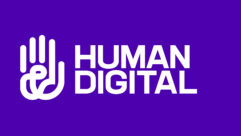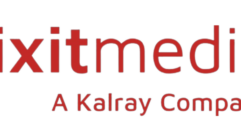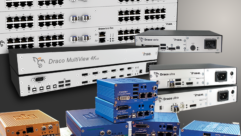Intellectual Property
Close your eyes and imagine for a moment. What will the pro AV market look like one, five, or even 10 years from now? Do you have a clear picture in your mind? Although most agree it’s impossible to predict the future, a group of AV experts did their best to do just that at the second annual ?Future Summit? of ICIA’s Independent Consultants in Audio-Visual Technologies (ICAT) Council at last year’s InfoComm.
Emerging standards
Close your eyes and imagine for a moment. What will the pro AV market look like one, five, or even 10 years from now? Do you have a clear picture in your mind? Although most agree it’s impossible to predict the future, a group of AV experts did their best to do just that at the second annual “Future Summit” of ICIA’s Independent Consultants in Audio-Visual Technologies (ICAT) Council at last year’s InfoComm.
Based on firsthand experience and analysis of industry trends, the group brainstormed its vision of what’s next for the AV industry, arriving at a general consensus on the following projections. The typical AV system of the future will have fewer discrete-function boxes as manufacturers exploit the power of digital signal processing (DSP). Software programming, development, and design will be increasingly important for integrating audio, video, and control systems. And consultants and systems integrators will inevitably encounter more competition from non-AV types, such as IT professionals and technically savvy end-users.
Although there are obviously many unknowns, these AV veterans believe one thing is almost certain. If our industry continues down the convergence path, the value AV professionals bring to customers will continue to move more toward intellectual property and away from installed hardware. In other words, a system integrator’s success will no longer be tied to the product lines he represents or sells, but rather to what his firm can do with them in the digital domain.
With these more complicated digital audio and video systems come a whole new set of challenges that must be solved with software solutions. Issues that come to mind include interoperability, scalability, future modification, and even learning curves for mastering the software components. The emerging answer to all of these concerns is simple: standards.
The videoconferencing industry would be in sad shape were it not for ITU-T standards like H.323 and H.320, which govern how codecs communicate. Similar standards are emerging for the software used and delivered in system designs, including touchpanel interfaces, control system code, and DSP software.
By default, most DSP audio matrix mixers use similar user interface software to graphically build audio filters and processing in the PC environment. The increased reliance on powerful DSP-based audio processors led to the creation of the Digital Signal Processing Summit that will premier at InfoComm 2005. Many experts agree that DSP systems have paved the way for the pro AV industry’s migration from analog to fully digital systems.
Foreshadowing the future of AV control, AMX recently announced Duet — a new firmware platform that allows programming code to be created in the proprietary AMX NetLinx language or in standard Java language developed by Sun Microsystems. AMX claims that one of the major benefits is the ability for AV equipment manufacturers to build control modules that include all desirable commands in a neat package. The module is installed in the projector, DVD player, etc., during manufacturing and automatically transfers itself into the control system upon hookup and activation. The AMX programmer only needs to include generic commands, known as Java “methods,” such as “TV.Power.setPowerOn(XYZ)” to control a device like a television. The actual manufacturer and device-specific code strings are stored in the module that comes with the unit.
The benefit — and potential threat — to programmers with this new plug-and-play approach is AMX’s estimate of 4.2 million trained Java programmers worldwide. For this reason, AMX will license the Java module builder program, Café Duet, to protect the integrator’s best interests from those programmers.
IT and programming standards offer the AV industry great benefit through platforms that allow innovation yet support interoperability. Where possible, manufacturers these days are putting their trust in software and firmware that can be updated instead of hardware. The overriding reason is cost control. If a problem arises in the field or a new twist on a current technology comes to light, upgrading the unit or fixing the problem requires only a simple flash of the firmware or upload of new software. With the advent of IP connectivity on many pieces of AV gear, this is accomplished without even physically visiting the site. The flipside could include retooling manufacturing, huge shipping costs to deliver the new hardware, complicated logistics, and major downtime for the AV system.
Most manufacturers are including headroom in the processing power of their DSP chips and digital architecture to support future technology developments. For example, videoconferencing companies typically don’t come out with new top-of-the-line codecs every year; however, they do offer regular software revisions. Advanced features built into the codec, such as multipoint bridging, are simply unlocked with the purchase of a software key.
Intellectual Property
Close your eyes and imagine for a moment. What will the pro AV market look like one, five, or even 10 years from now? Do you have a clear picture in your mind? Although most agree it’s impossible to predict the future, a group of AV experts did their best to do just that at the second annual ?Future Summit? of ICIA’s Independent Consultants in Audio-Visual Technologies (ICAT) Council at last year’s InfoComm.
Project deliveryDefine it up front
This reliance on software design profoundly impacts the system integration process. The skill of a pro AV company and the success of a project can be defined by the ability to use DSP power to adjust to the physical environment (sound and acoustics), improve human perception (sound and video), and increase usability and productivity (control and networking). Minimal software designs will produce minimal results translating into higher noise, less gain before feedback, poor usability, inconsistent results, less adaptability, and a host of other lackluster outcomes. The complexity of software-based systems has led to the proliferation of independent programming firms, specializing in GUI and code design. As evidence of this growing trend, the Independent Programmers Council met at last year’s InfoComm for the first time with more than 20 firms in attendance.
Mastering the business of software-enabled systems takes not only sales and technical expertise, but also requires better project management skills. Now that software is becoming a dominant system deliverable, designers and integrators must break down the code into manageable chunks — tracking progress just as they would for in-house fabrication or on-site pre-wiring.
As the lines between the AV and IT worlds continue to blur, the hardware integrators provide will look more and more like network equipment. The result of this convergence in the digital domain will be ubiquitous AV connectivity managed by software and protocol. Although good facility design, proper room acoustics, suitable noise control, ergonomics, and lighting will remain important parts of our business, we will be forced to learn new ways of designing AV systems. So if we agree that flexible firmware, customized programming, and widely used standards are the tools of our trade, how and when do we identify and manage our digital content rights?
Software code for AV systems is currently developed, for the most part, by the integration firm that purchases and installs the equipment — whether or not the project is consultant-led. Even though DSP and touchpanel design may originate in the consultant’s office for bid projects, the final application and tweaking is usually made on-site by the contractor who contractually manages the code integration. The consultant typically requires the contractor to provide the owner with any and all software design used in the final completion of the project. This means uncompiled control system code, DSP software designs, working touchpanel files, and other similar software-based material. There are many reasons consultants demand compliance, but the major ones are:
- To allow the owner to modify the system after the warranty period using any contractor or programmer he desires.
- To provide an owner-controlled backup copy in the event the original is lost, destroyed, or the system fails.
- To allow modification in the event that the contractor goes out of business or is otherwise prevented from completing future modifications in a timely manner.
- It’s important to note that some consulting firms as a best practice clearly state in the bid package that the contractor will be required to turn over all codes to the owner. In turn, the owner agrees to use the code only for the intended system. He retains the right to modify the code for future upgrades to that system, and the software developer maintains intellectual property rights to the code. Because bidders know this up front, this agreement becomes part of their contract with the owner.Many pros don’t recognize the similarities between the deliverables of the consultant and the contractor. The contractor-consultant relationship can be strained when one side doesn’t take the effort to respect the position of the other. Professional consulting firms typically prepare detailed engineering drawings and specifications —documents that are considered intellectual property of that firm. The last thing the consultant wants is the owner or contractor to covertly use them to develop other projects. But at the same time, these deliverables are a valuable part of the project and are very useful in the system’s development and maintenance. Ideologically, this is identical to the quandary placed on the ownership of the contractor’s software code.One solution, or compromise, is to turn over all of the documents to both the contractor and the owner with a written agreement that they will only be used on this project for the purpose intended. The standards for dissemination, protection, and use of construction drawings and specifications apply equally to the intellectual property of software code used in our systems.Considering our overzealously litigious society, theft of design is a problem that must unfortunately be addressed. Our industry is rife with stories of one firm stealing another’s designs. In many of these stories, this comes back to bite them in the form of bruised relationships, diminished integrity, or even lost work. In many cases, owners won’t consider doing business with firms who have been shown to engage in such practices. When a firm agrees to use software code, systems designs, or other intellectual property, it’s important that the contractual liabilities be passed to everyone in the firm who touches the property. This could mean limiting access to a select few employees and requiring them to sign legal documents that prohibit unauthorized re-use of intellectual property. But always consult an attorney for advice in this area.A path for the futureBecause the migration from hardware to software is changing the roles we perform on projects, some consulting firms are hiring in-house software programmers. Many contractors offer design services separate from equipment installation, even billing themselves as consultants. As a result, turf wars continue to spring up over which company should do what. However, what all parties need to realize is that when it comes to the intellectual property we build into our systems, we’re all in the same boat.Although AV pros must protect themselves from intellectual property disputes, they must balance their rights with the rights of the owner. The answer to the intellectual property debate is simple. Owners must be informed before the sale of what they’re buying and understand their options if a modification is required down the road. This calls for clear, written, contractual definition at the time of proposal or pre-bid of what intellectual property will be provided to the owner upon system turnover. The responsibility for providing this definition falls on the consultant for design-bid-build projects; on the contractor for design-build work.Programming is a service that provides a product of value. Define that value, obtain compensation for it, and move on. In the future, our custom code may see licensing arrangements like the computing industry has done for years. No one wants to lose a client to a competitor, but it’s worse to get caught in an argument or legal battle over rights to the code. When the buyers of our systems suffer, our entire industry gets a black eye, and these “gotcha” policies aren’t good business. Informed clients are better clients, and they will appreciate your honesty and willingness to educate them about the intellectual property inherent in their systems.Brain Patrick is a senior consultant with The Sextant Group, Atlanta. He can be reached at [email protected].










